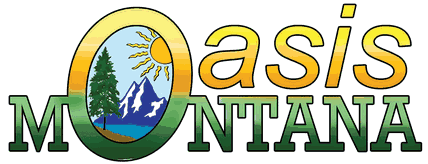|
Is Burning Wood Greener Than Burning Gas? Article by Vincent Standley
A Reader Asks The Green Guide: (reprinted in part with permission of
www.thegreenguide.com)
With an expected jump in natural gas prices I was contemplating the purchase of a wood burning fireplace insert to supply additional heat to our home. The manufacturer provides efficiency ratings for these but how do the emissions from burning wood compare with gas? Overall is it cleaner to burn wood or gas, considering all the factors like drilling, processing and transmission vs. wood?
Thank you, John Wolfe, Philadelphia, PA
The Green Guide Responds: A properly engineered woodburning system is by far a more eco-friendly source of heat than gas, oil, or electricity produced from non-renewable resources. Like all renewable energies, though, attention to every aspect of the process is necessary—from the origin of the fuel to its final release as gas and smoke. In this way, wood can be fully exploited as a smart alternative to non-renewable energy sources.
Greenhouse Gas: Ecologists generally agree that wood is carbon neutral. While burning wood releases a significant amount of carbon dioxide—a greenhouse gas also released by fossil fuels—the gas is reabsorbed by growing trees and turned into carbon, which accounts for half the weight of wood. Whether a tree burns in your fireplace or decomposes in the forest, it will release the same amount of carbon into the environment in the form of CO2, methane and other gasses. However, all of this only makes sense when the wood has been grown and harvested according to sustainable forestry practices. For example, selective harvesting preserves the bio-diversity and integrity of the forest, which in turn ensures that the CO2 will be reabsorbed and that you'll have a place to get more firewood. Hypothetically, this cycle can be repeated indefinitely. Fossil fuel can make no such claim.
Firewood: The firewood must be seasoned, which means exposing split and stacked wood to a summer's worth of open air and sun. Seasoned wood can be purchased by the cord (4 x 8 x 4 ft of tightly stacked wood), though verifying where it came from and how it was processed may be difficult. Obviously if you chop your own wood and season it yourself, your fuel costs will be even lower. On the other hand, you may buy un-split, unseasoned wood, split unseasoned wood or split seasoned wood. For all of this effort to really pay off, you need an advanced combustion stove or fireplace. These appliances burn wood much more efficiently than almost anything made before the mid-eighties. More efficient burning means less wood is used and less smoke is produced. All told, these new stoves and fireplaces use about 1/3 less wood and produce 90% less smoke to produce the same heat as earlier models. They actually re-burn the smoke, which produces more heat and eliminates the build-up of creosote. Consequently, advanced combustion burners require less maintenance than conventional stoves and fireplaces. Lastly, never burn garbage in your fireplace. It produces toxic substances, including carcinogenic dioxins (home burning is the fifth largest source of dioxins in Canada). It can also harm your stove. Reduce, reuse, recycle and, finally, toss out garbage instead.
Product Choices: There are several options when it comes to choosing a new advanced combustion stove or fireplace. Freestanding wood stoves are the most popular, and because of new EPA test standards, advanced combustion technology is now standard. Many factory-built fireplaces are nearly as efficient as freestanding stoves and can heat an entire house when properly installed and maintained. You may even use a central heating duct system to distribute the heat. Your plan to install a fireplace insert is also a viable option, and most fireplaces can now be converted into super efficient advanced combustion stoves, while preserving the existing masonry.
Quadra-Fire manufactures both free standing and insert wood burners, with a wide range of capacities. The 2100 Millennium which heats 950-1,500 sq. ft. to the 5700 Step Top which heats 3,500 sq. ft. Their inserts have a similar breadth: the 2700-I which heats 1,500 sq. ft. to the 5100I which heats 3,500 sq. ft. For prices call 610-346-7894. Other options may also be found at Heat-N-Glo, (888) 427-3973) and Heatilator, (800) 927-684).
Resources: For sustainable firewood, see listings at Forest Stewardship Council's
www.certifiedwood.org. The Wood Heat Org. is at
www.woodheat.org/environment/environment.htm
The Canadian Government's Guide to Residential Wood Heating is at www.canren.gc.ca/prod_serv/index.asp?CaId=103&PgId=576
NOTE: We at Oasis Montana have been heating our home and office with wood for years; our source is doug fir and lodgepole pine, well-seasoned leftovers from the local log home industry in our valley. Our stove is called an “Earth Stove”, and it has its own automatic dampening system for increased efficiency. We burn about 3 cords a year to keep our home and office very toasty.
|
